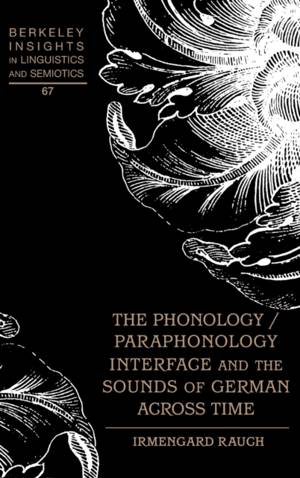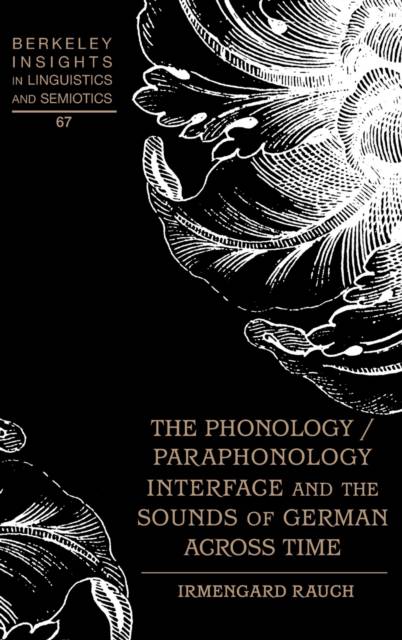
En raison d'une grêve chez bpost, votre commande pourrait être retardée. Vous avez besoin d’un livre rapidement ? Nos magasins vous accueillent à bras ouverts !
- Retrait gratuit dans votre magasin Club
- 7.000.000 titres dans notre catalogue
- Payer en toute sécurité
- Toujours un magasin près de chez vous
En raison de la grêve chez bpost, votre commande pourrait être retardée. Vous avez besoin d’un livre rapidement ? Nos magasins vous accueillent à bras ouverts !
- Retrait gratuit dans votre magasin Club
- 7.000.0000 titres dans notre catalogue
- Payer en toute sécurité
- Toujours un magasin près de chez vous
The Phonology / Paraphonology Interface and the Sounds of German Across Time
Irmengard Rauch
108,45 €
+ 216 points
Description
The Phonology / Paraphonology Interface and the Sounds of German Across Time is an excursion into the phonology of the German language in the present, the remote prehistoric past (Indo-European and Germanic), and throughout the almost thousand-year historical era. It accordingly addresses all eras pertaining to the study of the German language in its innermost core, namely, its phonology. This book makes accessible to linguists and non-linguists alike the elements of acoustic and articulatory phonetics. It provides the reader with insight into phonological methods from the Prague Structuralism and Chomskyan Generativism of the last seventy-five years to an array of today's non-linear approaches by applying them to given phonological changes that act as leitmotifs in the research of German sounds through time. The dynamic acts that infuse the structure of German phonology, such as ablaut, umlaut, and various other assimilations, diphthongizations, monophthongizations, and consonant shifts, are all woven into the book.
In each of the three time frames, the interface with ample paraphonological data allows the reader to experience flesh and blood phonology, that is, how it occurs and to what purpose in the mouth / ear of the speaker / listener of the German language. Not least, the reading of a piece of literature, be it a Runic inscription, the Old High German Otfrid, a Middle High German dawn song, the Early New High German Ackermann aus Böhmen, or a Rilke poem, adds delight to the understanding of the sounds that belong to our most vital and prized human possessions.
In each of the three time frames, the interface with ample paraphonological data allows the reader to experience flesh and blood phonology, that is, how it occurs and to what purpose in the mouth / ear of the speaker / listener of the German language. Not least, the reading of a piece of literature, be it a Runic inscription, the Old High German Otfrid, a Middle High German dawn song, the Early New High German Ackermann aus Böhmen, or a Rilke poem, adds delight to the understanding of the sounds that belong to our most vital and prized human possessions.
Spécifications
Parties prenantes
- Auteur(s) :
- Editeur:
Contenu
- Nombre de pages :
- 238
- Langue:
- Anglais
- Collection :
- Tome:
- n° 67
Caractéristiques
- EAN:
- 9781433101151
- Date de parution :
- 30-12-08
- Format:
- Livre relié
- Format numérique:
- Genaaid
- Dimensions :
- 152 mm x 229 mm
- Poids :
- 508 g

Les avis
Nous publions uniquement les avis qui respectent les conditions requises. Consultez nos conditions pour les avis.






